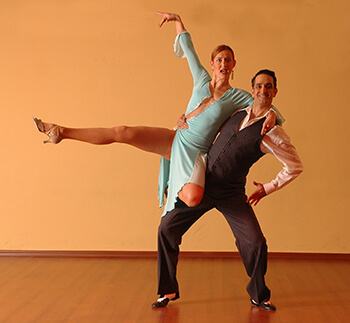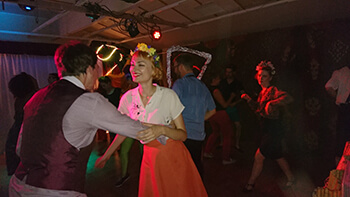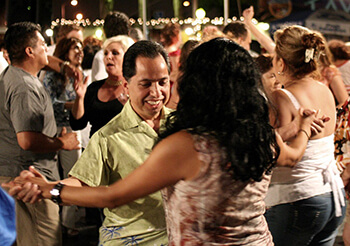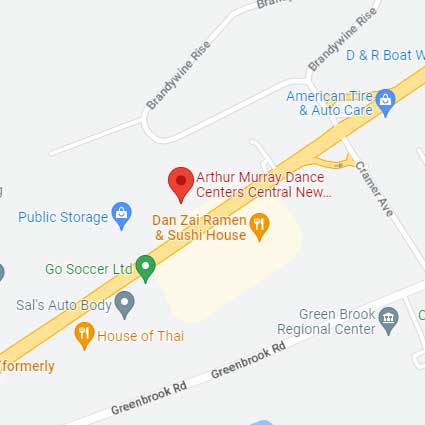1. I’ll never be able to look like the dancers I watch on TV
If you’ve ever had the thought while watching your favorite dance show “I’ll never be able to dance like that,” there are some things you should realize about those shows:
a. Those people you see flying across the screen have been eating, sleeping, and breathing partner dancing for their entire lives, or at least for a very intensive period of time.
b. The secret to their success? They’re not actually partner dancing. They’ve only learned choreographed routines to one song and have practiced for weeks. Don’t have time in your schedule to spend 12 hours a day dancing? No sweat! Because not all ballroom dancing has to be competitive. Sometimes it just has to be fun.
2. Ballroom Dancing = Competing
 “I don’t want to compete” is usually the first thing out of students’ mouths when they walk through the studio doors.
“I don’t want to compete” is usually the first thing out of students’ mouths when they walk through the studio doors.
Although setting a competition as a goal for yourself certainly makes you a more accomplished dancer in the long run, there is a lot more to partner dancing than competing at a high level and sparkly outfits. Although that’s part of it.
More Arthur Murray students come to the studio not because they want to be the next dancing star but to simply feel a little more confident and comfortable dancing with another person at a wedding, at a club, or a family party. In other words, they want to feel comfortable enough to just have fun.
“Ballroom dance” isn’t just waltz or tango. Ballroom dance incompasses all forms of partnered dancing, from salsa to swing to country two step. Whatever music you listen to, there’s a dance style for it. Being able to get up and dance with anybody, anywhere, to any music is what partner dancing actually about. Are you human? Then partner dancing may be for you.
3. You either have it or you don’t
 The only difference between people who dance well and people who don’t? Practice.
The only difference between people who dance well and people who don’t? Practice.
Natural ability might speed up the process, but hardwork and dedication are the things that make it stick. Why write yourself off? You deserve to enjoy dancing just as much as the next guy!
Don’t waste time you could be learning and dancing across the floor fretting about how you didn’t start young enough or the fact that you “don’t have rhythm.” Become the dancer you want to be by starting now. The only comparison you should be making is to yourself, before dancing and after dancing.
4. I can learn to dance in a couple of lessons
 If you want to feel comfortable and like you know what you’re doing on the dance floor with another person in your arms, it’s going to take some time (like most good things).
If you want to feel comfortable and like you know what you’re doing on the dance floor with another person in your arms, it’s going to take some time (like most good things).
Most people simply don’t realize that what they want out of dancing–feeling confident in their own bodies, having more fun on a night out, being able to move gracefully and build stamina–simply isn’t possible in three or four lessons.
Dancing isn’t a win/lose activity. Dancing is about discovery and growth, not about how fast you can cram dance knowledge. The truth is there is no end to dance education–if we want a cliche to sum it up: it’s about the journey, not the destination!
5. I’ll take some lessons then practice and see how it goes
Although practicing is a huge part of learning any new skill, there’s good practice and there’s bad practice. Partner dancing is tricky because, well, it involves two people. Practicing on your own is great, but unless you have a dance professional there with you at the party, who could tell you why your partner went one way when you meant to go the other, practicing on your own in the beginning is not something that any good dance teacher would recommend.
What should be a fun and relaxing activity can turn into, well, the opposite of that.
If learning to dance is something that you really want to do for yourself, invest the time, energy, and money into doing it right! The experience will last you a lifetime.
Written By Jindalae Suh for Arthur Murray Central New Jersey













